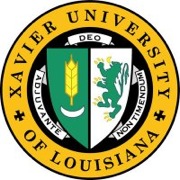Below is a summary of the abstract you submitted. Presenting author(s) is shown in bold.
If any changes need to be made, you can modify the abstract or change the authors.
You can also download a .docx version of this abstract.
If there are any problems, please email Dan at dar78@pitt.edu and he'll take care of them!
This abstract was last modified on May 3, 2018 at 7:28 p.m..

Phages were isolated from a variety of locales in and around the Greater New Orleans, Louisiana area using standard microbiological techniques. Genomic DNAs from two phages were sequenced and one genome, that of ugenie5, was chosen for analysis. The sequenced genome is 50,799bp in length, with cohesive ends showing a ten base pair overlap. BLASTn analysis reveals considerable nucleotide homology with the genomes of other known mycobacteriophages in cluster A, subcluster A9. Automated annotation employing Glimmer, GeneMark and Aragorn in the DNAMaster environment calls about 89 features including one putative tRNA gene. Analysis with Aragorn via the World Wide Web, external to the DNAMaster environment, substantiates the tRNA call. This feature is located in the left arm beginning at about 5900bp and putatively encodes a glutamate tRNA, with an anticodon in DNA form ctc. The external Aragorn prediction is corroborated by analysis with tRNAscan-SE. With the help of BLASTp analysis and similar tools, it is possible to make at least tentative proposals for the functions of possible gene products in the case of a significant minority of putative protein-encoding ORFs. The structure of the genome appears to be similar to that of many mycobacteriophages, with ORFs that at least potentially encode structural products at the left end, while the right end has a more complex and difficult to predict functional picture.

